The Dipont Compulsory Curriculum Centre (CCC), based in Shanghai, is responsible for developing cutting edge curriculum for use in Dipont School Programmes across China.
Here Jenny Stones, English Subject Leader talks about cross cultural collaboration, meeting parent needs, and the challenges and opportunities of developing a fusion of Western and Chinese pedagogies.
Moving to China during the height of COVID was a pretty bold move. What was your inspiration?
The bold move was moving to Russia after being a teacher for 13 years in the UK. When the opportunity arose to move to China, having spent two years in Russia I thought, why not!

Jenny, seen here enjoying the Northern Lights in the Murmansk region, worked as Deputy Head of School in Russia for two years before moving to China in 2021.
What have you learnt about collaborating across cultures through your time in Russia and now China?
I really enjoy meeting new people, and learning about the norms and values of others. Part of this has been learning that it is important to take into account cultural variation when it comes to education and national curriculums. I have had to adapt my perception of pedagogy and expectations of education to meet the needs of very different communities.
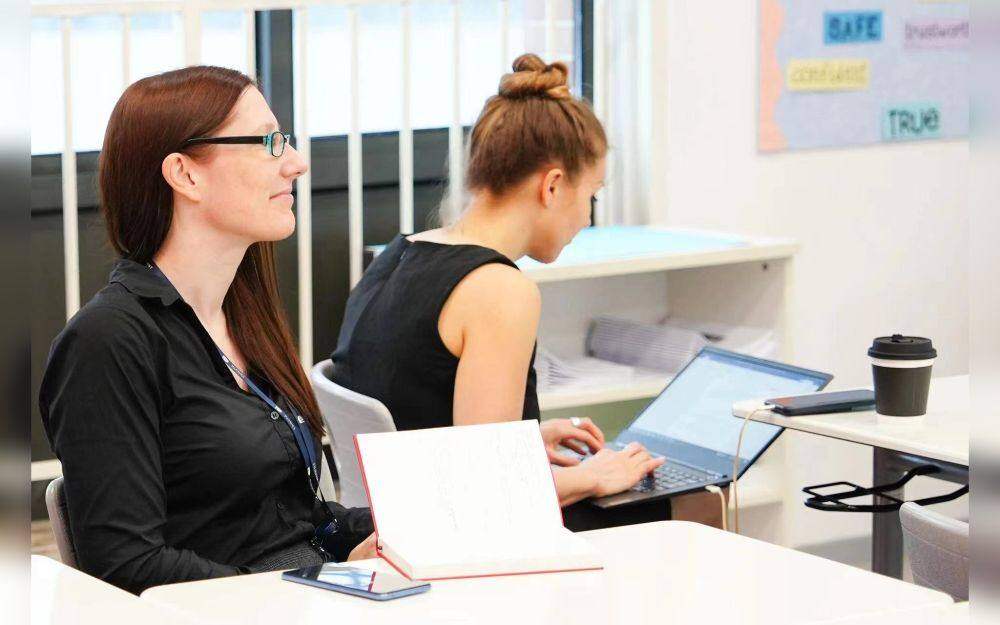
A big part of Jenny’s job is taking into consideration the needs of all stakeholders, including students, parents, teachers and school administrators.
By speaking to local people and other teachers cross-collaboratively I am always enriching my own knowledge. That’s what I felt in Russia, and that’s what I feel here.
What are some of the challenges of developing and implementing a fusion of Western and Chinese pedagogies?
The challenge for teachers trained in a Western context is that Chinese children learn differently. They prefer lessons as lectures, reading for information and completing textbooks. Teachers from the UK often use a range of strategies to cater for different learning styles, have very creative approaches and enjoy a lot more hands on practical teaching. Not all children in China enjoy that, or are used to it, or can adapt to that.
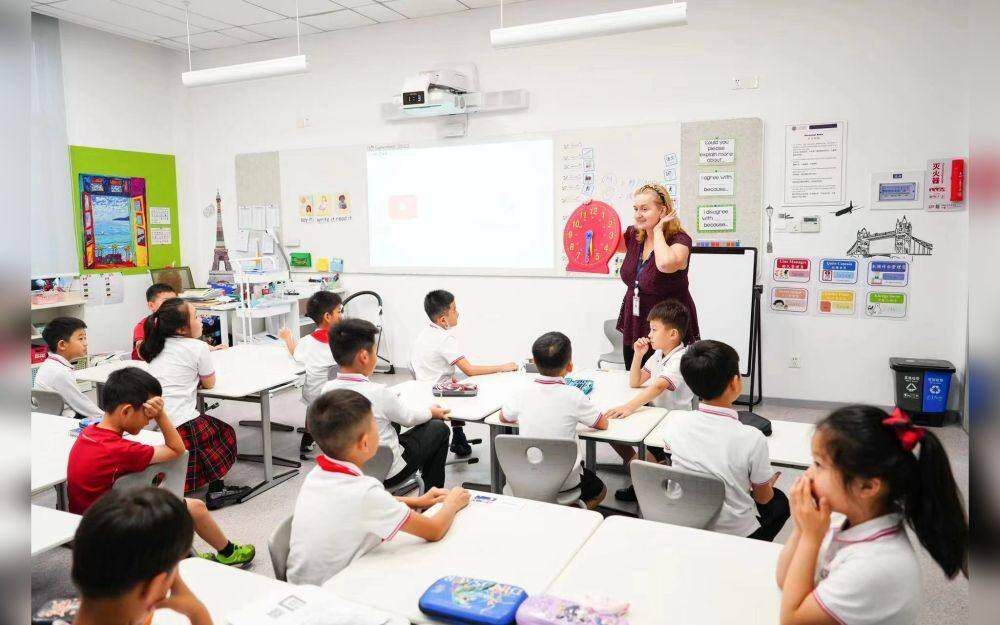
Small changes to the learning environment, including flexible seating and supportive working walls, lead to positive outcomes and pupil progress. An example of flexible seating is seen here in a class taught by Natasa Francis, head of Grade 1 -3 English at Hangzhou Dipont School of Arts and Sciences.
The challenge for a teacher can be that mind shift from working as creatively as they did before to working in a more structured style. The challenge is to come up with a new, innovative way of teaching, using a textbook, while integrating their own personality into that.
Parents in China can be particularly attentive about learning outcomes for their children. How does this factor in to your work?
You need to try to explain to parents that teaching is a reflective and reactive process. By having clear learning objectives and rigorous assessment procedures, you are teaching the whole child, not just a curriculum. Being clear and transparent about what is being taught, how it is assessed and what will be done to help children progress allows parents to trust the process. They need to know that their child is a part of that process and will get there eventually.
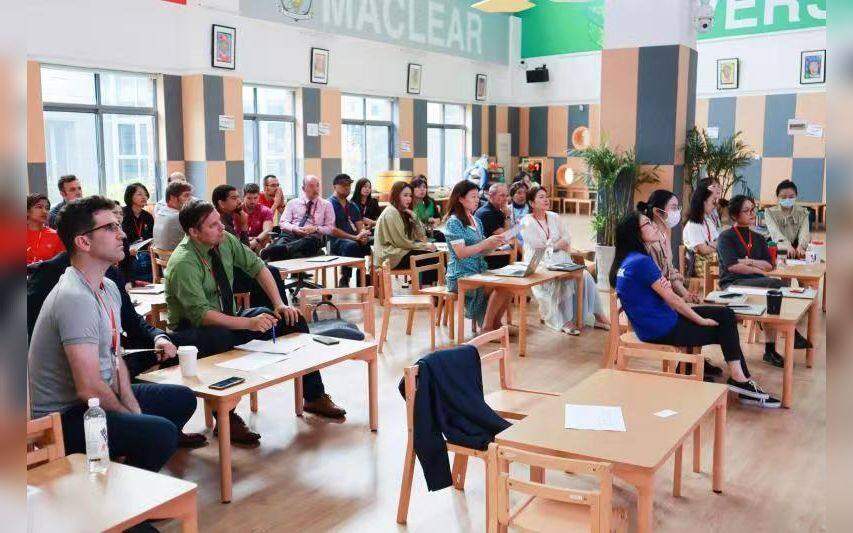
Visiting schools to discuss and strategize ways to support students using the new curriculum while earning the trust of their parents has been a significant part of the CCC’s team work over the past six months.
Here in China we’ve got children at different levels of English, and parents with high expectations. They want their child in the top set. However, if they don’t have the language ability and you put them in the top set, they can’t actually access the content.
The solution is to create a rigorous, effective curriculum that can be understood by prospective parents. This is what can gain their trust. A written framework that explains what to expect is important in that process.
How do you see the effect of this curriculum project on student well-being?
I can’t speak for all parents, but most parents who send their children to private schools are wanting the best outcomes for their children and, in some cases, children are being pushed far too much. The government is trying to stop this pressure on children by putting policies in place to improve pupil well-being. That includes the closure of many after school cram centres, for example.
In some of our schools, we set pupils and in some there are mixed ability classes. Setting is a contentious issue. Depending on which side of the fence you sit, it can be successful or the opposite.
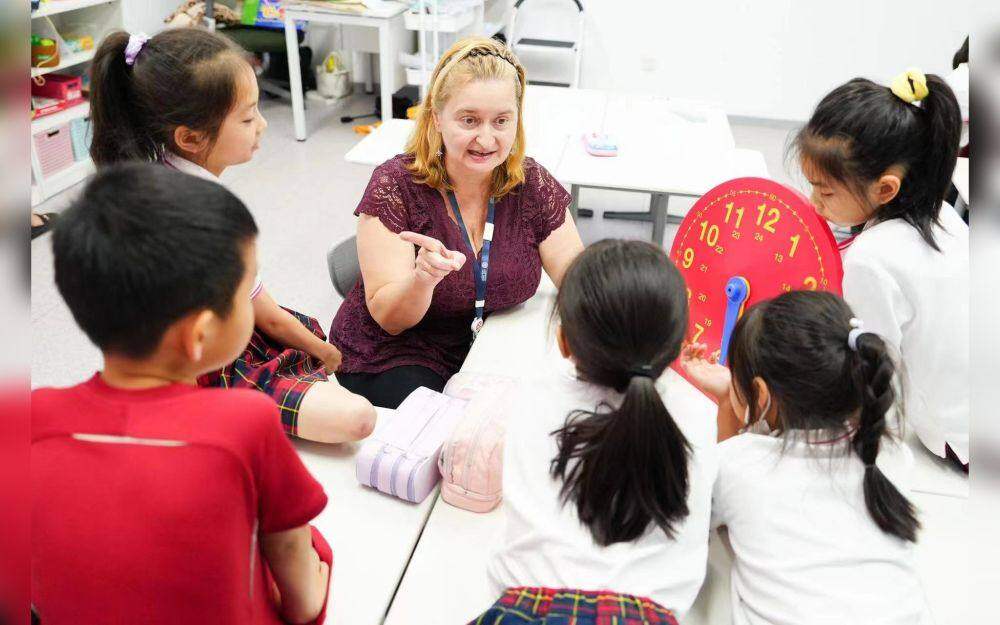
Observing classes, such as this example from Hangzhou Dipont School of Arts and Sciences, helps Jenny’s team to notice and integrate the ideas, skills and techniques of Dipont teachers into the curricula they are developing.
What can you do to best manage your classes if there are these differences in language ability?
In the UK, setting children is rare, because you end up with a class of children who are low ability or disruptive. With this in mind, you try and distribute children evenly. In China you often find that children have got very different language abilities in one class. In this case it’s not that you are separating pupils because of their cognitive ability. Instead, there’s a need to organize your lessons based on ability to access the curriculum. Academic language that is pitched too high can move some pupils forward while holding others back – a balance is needed.
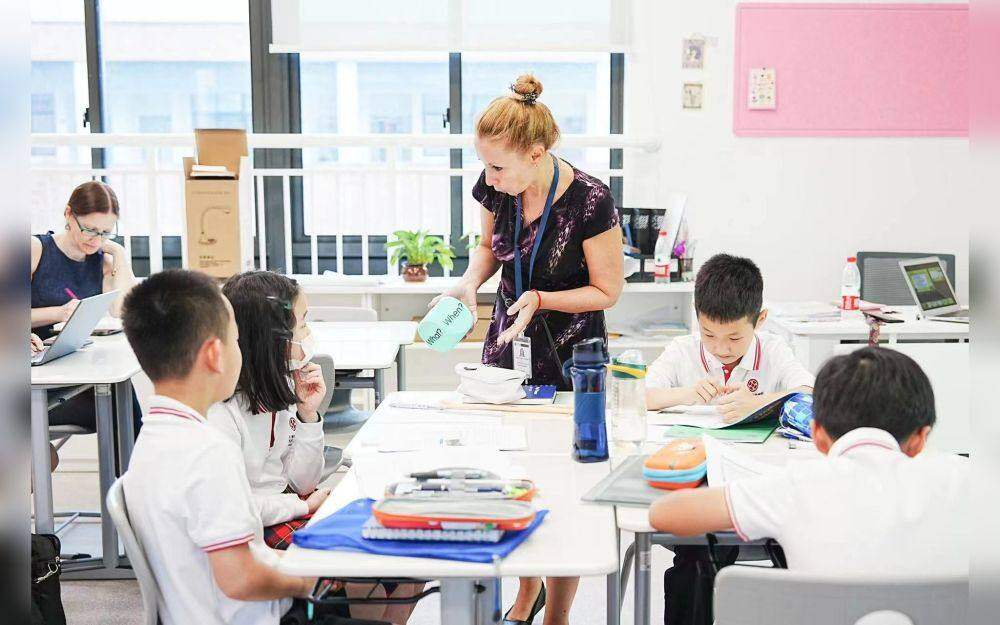
Close attention to individual student needs, and embedding the capacity to adjust curriculum delivery to accommodate variance in English ability, has been a delicate but vital part of the curriculum development process.
You need to support students in their learning by making sure that they’ve got the language foundation they need. In a lot of ways this lies at the heart of our work. How can we improve the communicative ability of our children so that they make the most progress with the curriculum?
How do you go about encouraging teachers to use the new curriculum?
We spent a lot of time in schools prior to the writing of the schemes of work. This was when we were getting to understand everybody, so we could try to meet everyone’s needs. The launch was just before the start of this academic year. Now we are going into schools to do follow up observations and check on how the curriculum is being used.
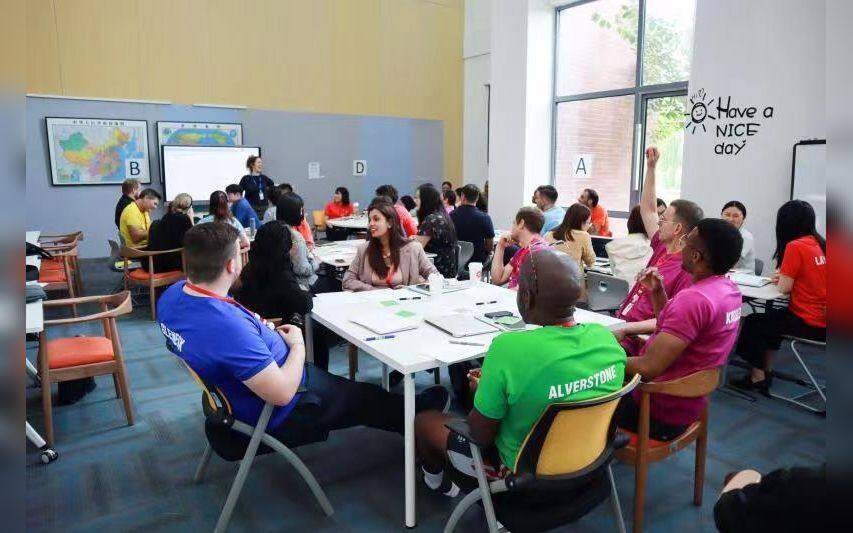
Leanne Grundy, Director of Education for the Dipont Schools Programme, leads a teacher workshop at Wuxi Dipont School of Arts and Science.
We came away from our first visit really positive. When we first introduced this idea of working from a textbook, we were met with a lot of resistance. But the feedback that we’ve had is that there are creative opportunities in the enrichment that we have provided. We have also been told that the new schemes of work are exciting for the children. It gives the children a formula that they can trust and feel safe using.
As we work closely with schools, we encourage feedback and integrate the professional experience and suggestions of teachers. This way we keep improving on our work – making it fit for purpose. That’s what our team is all about: going in and finding out what’s needed.
What would you say to encourage other curriculum experts to join your team?
I really like it here. I enjoy working with my colleagues. They are always willing to help, and we support each other. I’m working with Chinese, English, Canadians, and people from all around the world. The scope of the collaboration is tremendous. It’s a great environment to work on a project as challenging and impactful as ours.

